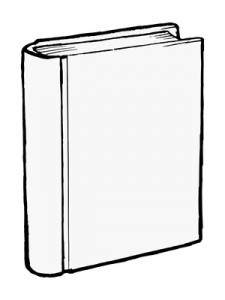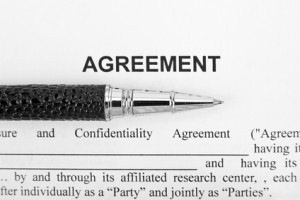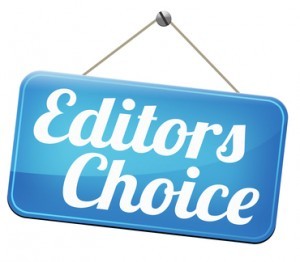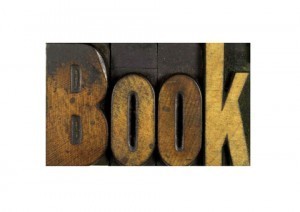Ruth Ford Elward's Blog, page 4
July 1, 2015
Electronic Book Covers
For freely offered writing Resources go to RuthFordElward.com
ELECTRONIC BOOK COVERS
An electronic book cover is a little different; all that is required is a front cover. At first, it might not seem that important because the book isn’t being physically purchased. But again, having a beautifully designed cover is the first impression a prospective reader will have and from that, they will decide on whether or not to read the book description.
The description, the author’s bio and various other details are displayed often times just below the book cover on the site the book would be purchased from. Having all this information at a reader’s fingertips eliminates the need for a back cover.

Electronic book covers also don’t have to be quite as high quality (72dpi) due to the way they are displayed, which makes it a little less expensive for the author to commission.
Authors can technically get away with using a stock image or designing their own image to use, but unless the author is also an artist or digital designer this isn’t recommended.
Authors do have a bit more freedom with their digital covers. If you do go that route, make certain that you’ve covered all your bases in regards to the licensing of images you are using. Standard usage is not always enough in these cases.
It is important to remember not to go overboard with the electronic book cover.
Simple, legible fonts are the best for front covers. The image itself should set the overall mood of the book and give readers at least some idea of the tone or theme of the story.
If it is part of a series then it is worth mentioning, through a special logo or by naming the series in the title.
June 24, 2015
Cover Art
For freely offered writing Resources go to RuthFordElward.com
COVER ART
There are many freelance designers/artists that can be found online who can design a book jacket and spine for you. As with any other facet of the project, you will need to make sure that you are asking for references and viewing past work that they’ve done.
eBook cover designers can charge as little as $5 however whether it be an eBook cover or a full book jacket for a print version, the cost can be anywhere from $5 to $900 or more depending on the complexity of the work and whether original art is generated.
If you are publishing with a traditional publishing company, the artist will be selected for you and you will have little input into that process.
Most publishers will send you the top two or three cover samples for you to make a final determination.

Finding a cover artist can be done following the same route used to find a good editor. Many of the freelance worker sites also have a graphic artist and illustration section where you can look at portfolios, contact the artist directly, and bargain for a good price.
The good thing about hiring a freelance artist is that most often they have the ability to be flexible with their pricing, especially if they believe that there is future work in it for them.
The simple fact of the matter is a good book cover is going to draw in anyone that is browsing through a book selection, and it will be the first thing that someone notices.
Even in cases where someone notices the title first, when they go to take a look at the book they are going to be looking at either the front or back cover. Both of which are designed to entice potential readers. Books are even reprinted specifically to have more appealing covers, especially when a book series gets turned into a movie.
Printed books have to not only have a front cover, but a back cover as well. The front cover is typically just an image that also has the title of the book and the name of the author.
Sometimes, there might even be a little blurb, something to indicate a previous famous work the author has done, or even an award that they might have won.
The front cover could also contain information about the book being part of a trilogy or somehow related to another book or series.
The front cover is designed to draw people in so they check the back cover, which contains a small description of the book. Sometimes, there will be a few reviews and recommendations. More famous books, such as the Harry Potter series, have a book jacket which is just an image on the front that continues onto the back, then the actual information is written inside the jacket. Famous books can get away with this because the franchise name is enough to draw in readers. That’s why the first book in a series very rarely has these types of jackets, but later books might.
June 17, 2015
Designers
For freely offered writing Resources go to RuthFordElward.com
DESIGNERS
The cost of cover design is another aspect of publishing a book for which an author should seek out a quote before setting a budget. An attractive cover is crucial as it will give the reader his first impression of the book.
Some readers decide if they want to purchase a book based only on the opinion they get from the cover and information included on the book jacket.
Not all but some designers will also work on the interior of the book making it attractive by choosing an easy to read font, and suggesting appropriate chapter graphics and page number placement.
Even for those who choose to go the route of the electronic book instead of a physical book, the cover design is still critically important as the cover image is often the only hint a prospective reader may get of what the book is about before they purchase.
One important factor about covers to note is for both eBook and print versions, when approving a design, always consider how it will look in a thumbnail version.
A thumbnail is a reduced size that will be used often in a variety of ways for advertising. The average size of a thumbnail is somewhere around 200 x 200 and because of the reduced size it’s easy for details to become distorted.
June 11, 2015
Ruth’s Book Review of The Persuader
For freely offered writing Resources go to RuthFordElward.com
THE PERSUADER (Jack Reacher book 7) by Lee Child
Unfinished business takes Jack Reacher back to what he was always meant to do. Ten years should have toughened him up. But one day is all it takes to bring back old memories, open up old wounds, wake up old feelings, rebuild old alliances. Now he’s helping the Feds solve a crime involving drugs and kidnapping. This revealed Jack Reacher’s vengeance against Quinn, the man he thought was dead a long time ago.
I saw the movie Jack Reacher a year ago and was astounded by the sheer audacity of Jack Reacher, fighting crimes, shooting bad guys and consequently fearing for his life. This book, however, in my opinion is better. From the first chapter alone, I knew I was already persuaded. With this book, I came to love the way Lee Child makes every novel an absolute page-turner. He certainly makes sure his action scenes are worth anticipating, the plots worth contemplating and the next book worth waiting for.
This may have been the 7th book in the Jack Reacher series, but Lee Child still has not lost his touch. The Persuader certainly doesn’t disappoint.
June 10, 2015
Ruth’s Book Review of Frozen Past
For freely offered writing Resources go to RuthFordElward.com
FROZEN PAST (A Jaxon Jennings’ Detective Mystery)
by Richard Hale
There’s something sinister lurking behind the bushes, watching its prey from a distance, pretending, begging, asking. And when his victim comes close, he’ll attack and do the unthinkable.
Luke had been friends with Eliana since they were kids and he had always had a soft spot for her. So when he discovered what happened to her beloved pet dog, he did everything to protect her from seeing the most gruesome thing that would hurt her. But the world is cruel. Life is cruel. And the one who did this to her dog is definitely cruel.
Later on, a picture of the decapitated dog roamed Facebook, sent by a mysterious Will Smith, taunting the children, horrifying them. It’s a cruel joke, and Luke must do everything to get to the bottom of this.
This story grabbed me from the first chapter and did not let me go until I got to the last page. It had the makings of a Young Adult novel in the beginning, but as you peruse the whole story, you are caught dead wrong.
Richard Hale wrote a mystery thriller that left the reader gaping with his mouth open wide. The trails of clues left behind makes you guess and think you know the culprit already. And the next thing you know, you are quite mistaken all along. This is the beauty of mysteries and thrillers. You think you know everything, but seriously, you don’t. And that’s how the author made this book a really gripping story.
June 6, 2015
Editorial Milestones
For freely offered writing Resources go to RuthFordElward.com
EDITORIAL MILESTONES
Many editors have a flexible fee schedule and may ask you if you prefer to pay a lump sum fee, or if you’d rather pay by the hour.
Some work for ‘milestones’ which are a set number of pages or some sort of identified goal.
If the novel is of any length, then typically the first third is paid for, then the next third of the novel, with the final third of the novel rounding out the final payment for services.
It pays to ask questions. Many editors, worth their fees, will have no problem answering the following questions:
1. How long have you been an editor?
2. Is there a specific genre that you specialize in?
3. Can you show me some work that is somewhat similar to mine that you have edited?
4. Have you had any of your own books published?
5. Have you worked in any other capacity in the publishing world?
6. Do you have other connections in the publishing world and would you be willing to make introductions for me?
Finding a good quality editor is second only to setting aside an appropriate budget to pay the editor for their time and expertise.
One quick way to choose a good quality editor is to offer them no money and a percentage of the sales when your book ‘hits it big’. That only works if you are already popular with a following and the sales are guaranteed.
What follows is an expanded listing of a typical fee schedule for a full time editor.
However, understand that almost all editors are willing to negotiate pricing to some extent, especially if it is a project that they are interested in.
Novel length book: 250+ pages…………………………………. $500-1,000
Short Story: less than 15 pages……………………………………$75-125
Poetry collection: 100 pages………………………………………….$350+
Academic Textbook ..……………………………………..………$2,500-3,500+
Nonfiction book: …………………………………………….…………….$1,000+
Children’s book (picture book): …………………………………$250-350
June 3, 2015
When Hiring Help
For freely offered writing Resources go to RuthFordElward.com
WHEN HIRING HELP
Considering that you are already convinced that you need another pair of experienced eyes on your finished manuscript, there are a few things to keep in mind.
You’ll need to find someone that will be able to continue the vision that you have for the work, and not leave it and you worse off than when they took on the project.
Most editors that have been working for many years have no problem providing samples, references, or testimonials. Their skills and resumes should be easily obtained online, for most who are reputable have an online presence.
As mentioned earlier, there are developmental editors, line and copy editors. There are also book doctors and ghostwriters.
If you just got the idea on paper and know that it doesn’t really read well, in other words it is very rough, then you may very well need the services of a book doctor or ghost writer.
These writers should have numerous examples for you to read through so that you can see what their style of writing is like. Those that have been around for a while can write in a variety of tones, styles, and points of view.
A book doctor and/or ghostwriter will flesh out what you already have written, correct your problems and work with you to make it publishable.
The one thing to keep in mind (and this rings true for ANYONE you bring onto your book’s team) is that at no point will they be able to claim rights to the book. Having them sign a Non-Disclosure or Confidentiality Agreement as well as a Work for Hire Agreement is a must.
Samples of these types of agreements are available online and may be adjusted to fit your information and criteria.
May 27, 2015
Editing Costs
For freely offered writing Resources go to RuthFordElward.com
EDITING COSTS
If you’re trying to get an idea how much it might cost to move from an idea for a good book to a print copy, there’s more than just paper and ink to take into consideration. Each stage of the planning, writing and publishing of a book has its own list of costs to take into consideration. 
Editing Costs
Before one puts together a budget a writer must get a quote from a good editor. An editor who is good at his job can be the difference between a book’s success and its failure. Most writers will work with both a developmental editor and a copy editor.
A developmental editor works as a sounding board, off of which the author can bounce ideas. This editor can help a writer ensure his characters are believable and the story line works. In essence, the developmental editor is a type of writing coach, assisting you in making the content of your work believable and cohesive. They may also offer doctoring in particularly troublesome plot areas within the work. A Developmental editor will cost you more than a proofreader/copy editor.
On the other hand, a copy editor will read the manuscript carefully to find spelling, punctuation and grammatical errors.
The price of a good editor can run anywhere from $350 to $1,500.00 depending on how much work is involved and how much time you will require of the editor.
Finding an editor can be a daunting task if you don’t know where to look. There are a number of writing brokerage companies who offer a wide variety of editors with a wide variety of price ranges and experience.
Some of those brokerages are: Guru.com, Elance.com, and Odesk, to name a few. Make sure to ask for samples of past work as well as references or testimonials as getting a bad editor is worse than no editor at all.
May 20, 2015
A Word about Writer’s Conventions, and Workshops
For freely offered writing Resources go to RuthFordElward.com
A WORD about WRITER’S CONVENTIONS and WORKSHOPS
It may seem a bit out of place to discuss writer’s conventions or workshops in a publishing section. However, so many contracts, negotiations, connections, and publishing deals happen as a result of a direct meeting with an agent or editor from a publishing house that it bears mentioning in some detail.
Simply attending, without a game plan or preparation, however, will not yield sufficient results.
Find a listing of potential writer’s conferences, contests and workshops. A really extensive listing can be found on http://writing.shawguides.com/.
The conferences are listed by state, region, and geographical location (even internationally).
Choose a conference that is featuring guest speakers and workshop presenters who are particularly in line with the type of work you are producing and would like to have published.
Check the itinerary and see if there will be editors and agents on site and who are offering one-on-one interviews with attendees.
Make sure that you bring several things with you to the conference:
• Business cards
• Two sided pitch page (front page is synopsis of the book, back page is your query letter).
• Flash drive, or two, of your entire manuscript….because you never know.
• Pencil and paper…..seems like a no-brainer, but it should be said that if someone wants to give you some sage advice, or a contact’s name…having nothing to write with or on is going to be the low point of your visit.
It may shock many to read that you need a business card to attend a writer’s conference. In fact, you don’t need one, but many authors have negotiated significant deals with editors and agents primarily because the agent/editor was able to remember them.
Yes, they may lose the card…..but a follow up email will remind them of who you are.
Most will not lose the card and actually have a place to stack the countless collection of them that they will inevitably end up with. Make yours stand out.
Business Card Basics
Of course, having your name and contact information on the front of the card is a great idea, and most know this instinctively. However, including a small picture of yourself, or some symbol that represents the book you are writing can help jog their memory when they return to the office the next week.
Additionally, don’t neglect the back of the card. Have a 30 second elevator pitch written back there.
The ‘pitch’ is basically a 2 sentence synopsis of the book. Make sure to include a website (HAVE one before you go) as well as an email address so that they can contact you.
May 13, 2015
Agents and Publishers
For freely offered writing Resources go to RuthFordElward.com
AGENTS AND PUBLISHERS
Publishers and literary agents are specialists in the industry. They should have inside contacts with editors and be familiar with what types of work are potential money makers.
Agents specialize in the art of negotiating a deal on your behalf, they guarantee you getting your fair share of the profits and in finding the best publishing house for you.
By tradition, agents only get paid after they are able to place your work, and generally they get around 15% commission on what you earn.
Bear in mind that a publishing company’s goal is to make money and they will support authors who can provide them books that have the potential for profit. So, if your proposal is turned down by an agent or a publishing house, it means that they do not see your book’s earning potential.
Publishing is an industry that requires professionalism and the submission process requires massive persistence and dedication, especially today when there is so much competition.
One last thing, it is one of the many unwritten rules in the publishing industry that editors and agents will not accept office visits from an applicant author.
You can have the opportunity to interact with agents, editors or other representatives of publishing houses during a writer’s convention, which I’ll cover next.
Ruth Ford Elward's Blog
- Ruth Ford Elward's profile
- 9 followers




